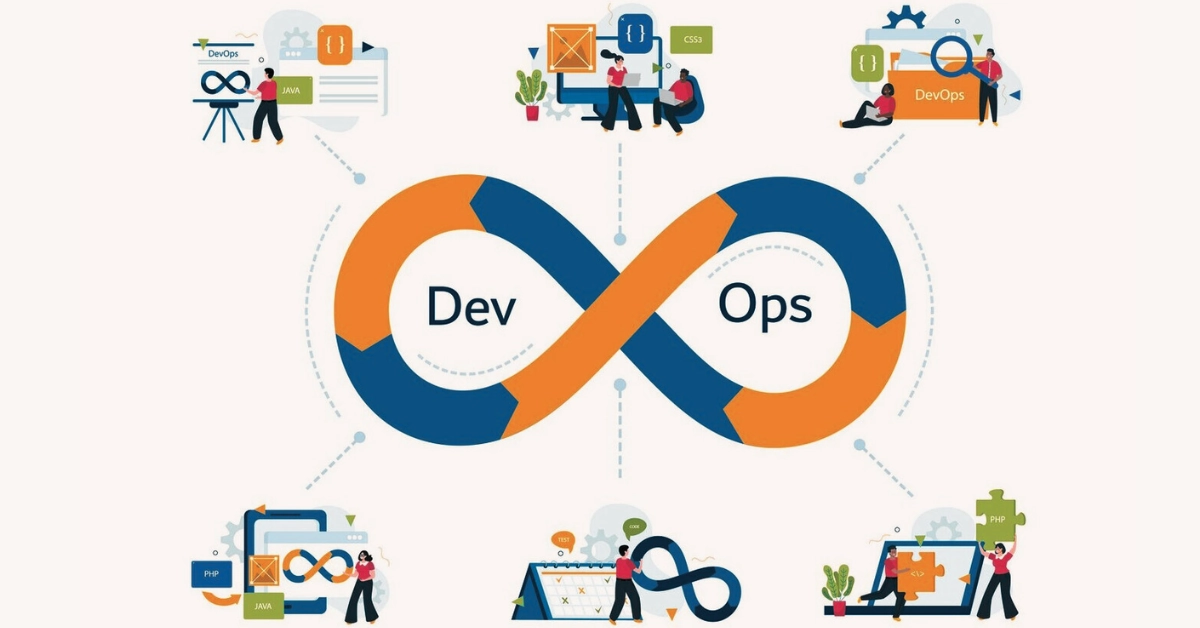DevOps is a set of practices and cultural philosophies that aim to improve collaboration between software development (Dev) and IT operations (Ops) teams, thereby enhancing the speed, quality, and efficiency of software delivery. This article explores the principles, key practices, benefits, challenges, and future trends of DevOps, highlighting its transformative impact on modern software development and IT operations.
Principles of DevOps
DevOps is guided by several core principles aimed at fostering collaboration, automation, and continuous improvement:
- Culture of Collaboration: Encouraging shared responsibility, communication, and collaboration between development, operations, and other stakeholders throughout the software lifecycle.
- Automation: Automating manual processes, such as build, test, deployment, and infrastructure provisioning, to achieve consistency, reliability, and speed.
- Continuous Integration and Continuous Delivery (CI/CD): Implementing CI/CD pipelines to enable frequent integration, testing, and deployment of code changes, ensuring rapid and reliable delivery of software.
- Infrastructure as Code (IaC): Treating infrastructure configurations as code, enabling automated provisioning, management, and versioning of infrastructure resources.
Key Practices in DevOps
- Continuous Integration (CI): Developers frequently merge their code changes into a shared repository, with automated builds and tests triggered upon each commit to detect integration issues early.
- Continuous Delivery (CD): Extending CI by automating the deployment process to staging or production environments, ensuring that software can be released reliably at any time.
- Monitoring and Logging: Implementing robust monitoring and logging practices to gain real-time insights into application performance, detect issues promptly, and facilitate quick resolution.
- Security as Code: Integrating security practices and controls into the development and deployment pipelines (DevSecOps), ensuring that security is embedded throughout the software delivery lifecycle.
Benefits of DevOps
- Accelerated Time-to-Market: Streamlining development, testing, and deployment processes leads to faster delivery of features and updates, enabling organizations to respond swiftly to market demands.
- Improved Collaboration and Communication: Breaking down silos between teams fosters a culture of collaboration, shared goals, and collective ownership of software delivery outcomes.
- Enhanced Stability and Reliability: Automation and standardized practices reduce human errors, enhance system stability, and improve the reliability of software and infrastructure deployments.
- Scalability and Efficiency: Scaling infrastructure and applications efficiently through automation and cloud technologies, optimizing resource utilization and reducing operational costs.
Challenges in DevOps
- Cultural Resistance: Overcoming organizational resistance and cultural barriers to adopting DevOps practices, including changes in mindset, workflows, and responsibilities.
- Toolchain Complexity: Managing and integrating a diverse set of tools and technologies across the DevOps pipeline, ensuring compatibility, and maintaining consistency.
- Skill Gaps: Developing and retaining skilled professionals with expertise in both development and operations, as well as proficiency in automation, cloud platforms, and modern technologies.
- Security and Compliance: Addressing security concerns and ensuring compliance with regulatory requirements while implementing automated processes and infrastructure changes.
Future Trends in DevOps
- AI and Machine Learning: Leveraging AI-driven insights and automation to optimize DevOps processes, predict system failures, and enhance decision-making in software delivery.
- GitOps: Applying Git-based workflows for declarative infrastructure management and continuous delivery, enabling version-controlled and automated infrastructure updates.
- Serverless Architecture: Embracing serverless computing for agile and cost-effective application deployment, reducing operational overhead and improving scalability.
- Edge Computing: Integrating DevOps practices to manage and deploy applications at the edge, closer to users, to improve latency and responsiveness in distributed environments.
Conclusion
DevOps represents a paradigm shift in software development and IT operations, emphasizing collaboration, automation, and continuous improvement to deliver software faster, more reliably, and with higher quality. As organizations continue to adopt DevOps principles and practices, addressing challenges, embracing emerging technologies, and nurturing a culture of innovation and continuous learning will be essential for achieving sustainable growth, competitiveness, and customer satisfaction in a rapidly evolving digital landscape. By embracing DevOps, organizations can effectively bridge the gap between development and operations, streamline workflows, and drive business agility and success through accelerated software delivery and operational efficiency.
Top of Form
Bottom of Form
